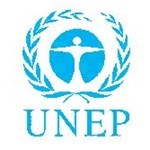
Subscribe & Follow
Advertise your job vacancies
African countries to be hardest hit by global food price, UN report finds
If global food prices double then China could lose $161bn in GDP and India could lose $49bn, but African countries will be hardest hit, according to a new report released today by the United Nations Environment Programme (UNEP) and Global Footprint Network.

The UNEP-Global Footprint Network report, entitled ERISC Phase II: How food prices link environmental constraints to sovereign credit risk, features a table that ranks countries according to how badly they will be affected if global food commodity prices double. The report is available at here.
In the future, the world will likely suffer from higher and more volatile food prices as a result of a growing imbalance between the supply and demand of food, the report notes. Rising populations and incomes will intensify the demand for food while climate change and resource scarcity will disrupt food production.
The report, which was published in collaboration with Cambridge Econometrics and several leading financial institutions, models the impact of a global food price shock on 110 countries to assess which countries face the greatest economic risk from this growing imbalance.
The five countries
In terms of the highest percentage loss to GDP, the five countries that will be worst hit if food commodity prices double are all in Africa: Benin, Nigeria, Cote d’Ivoire, Senegal, and Ghana, but China will see the most amount of money wiped from its GDP of any country – $161bn, equivalent to the total GDP of New Zealand. India will see the second highest loss to GDP – $49bn, equivalent to the total GDP of Croatia.
Among the report’s other key findings are:
- • Overall, Egypt, Morocco and The Philippines could suffer the most from a doubling of food prices in terms of the combined impact on GDP, current account balance and inflation;
• Seventeen out of the 20 countries most at risk from a food price shock are in Africa;
• Paraguay, Uruguay, Brazil, Australia, Canada and the US would benefit the most from a sharp increase in food commodity prices;
• Globally, negative effects of a food price shock massively outweigh positive effects in absolute terms. While China could see an absolute reduction in GDP of $161bn, the highest absolute positive effect on GDP, seen in the US, is only $3bn –50 times smaller than the impact on China;
• In 23 countries, a doubling in food prices leads to a 10% (or more) rise in the consumer price index;
• Countries with higher sovereign credit ratings tend to be less exposed to risks resulting from a food price spike; and
UNEP's executive director, Achim Steiner, said: “Fluctuations in food prices are felt directly by consumers and reverberate throughout national economies. As environmental pressures mount, it is important to anticipate the economic impact of these stresses so that countries and investors can work on mitigating and minimising risk. And as the global population continues to rise, food prices can be a bellwether for how environmental risk translates to economic risk and vulnerability.”
Susan Burns, co-founder of Global Footprint Network and director of its Finance Initiative, said: “Now more than ever, in this era of climate change, identifying all relevant environmental risks is crucial to investing not only in equities but also sovereign bonds.
“As this latest research shows, disruptions to our food system represent one substantial environmental risk that both investors and governments may be largely overlooking but would be well served to integrate into their risk analysis.”
The ERISC Phase II report was published in collaboration with Cambridge Econometrics and several financial institutions: Caisse des Dépôts, First State Investments, HSBC, Kempen Capital Management, KfW, and S&P Global Ratings.
The report builds on the first Environment Risk Integration in Sovereign Credit (ERISC) report published in 2012 by UNEP FI and GFN.
The overall objective of the ERISC project is to assesses how environmental risks, such as deforestation, climate change and water scarcity affect economies, given that GDP, inflation and current account balances underpin some of the criteria that determine a country’s sovereign credit rating and the cost of borrowing on international capital markets.
Call to work together
UNEP and GFN would like to invite interested parties, governments, banks, investors and rating agencies to work with them to further decipher the link between environmental constraints and sovereign credit risk.
The ERISC report comes before the release of a landmark report on food systems and natural resources written by the International Resource Panel (IRP), a consortium of 34 internationally renowned scientists, over 30 national governments and other groups hosted by UNEP.
The IRP report, which lists a series of solutions that will improve the world’s food system, will be released in Nairobi on 25 May at the United Nations Environment Assembly – the world’s de facto Parliament for the Environment.








